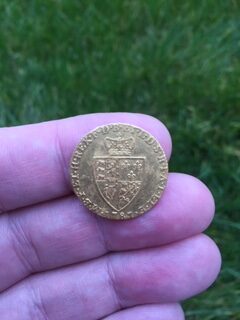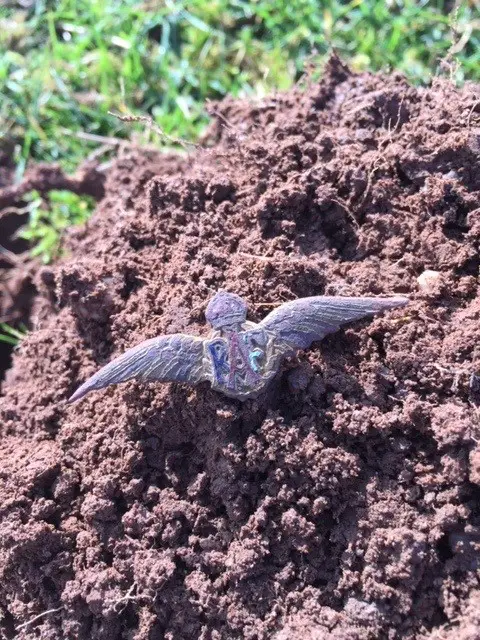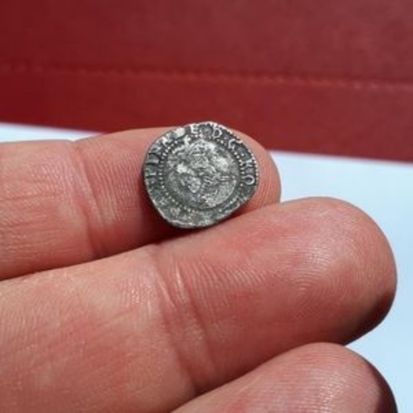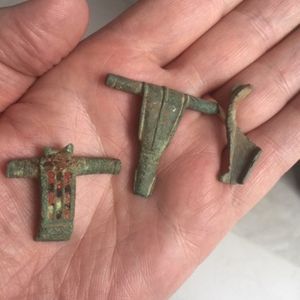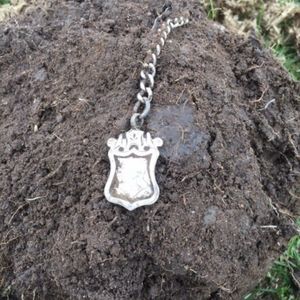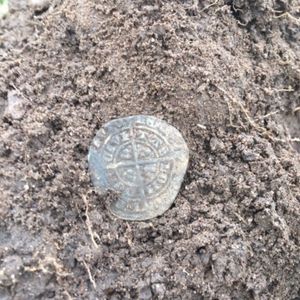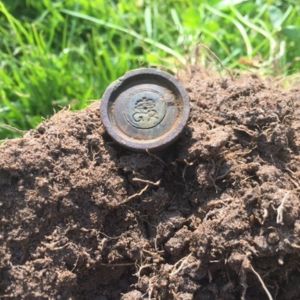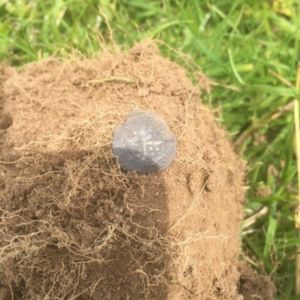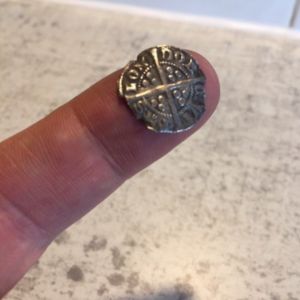The Minelab Vanquish metal detectors are a series of detectors comprising of the 340, 440 and 540. Features increase as you climb the range.
They all utilise the Minelab Multi IQ technology that uses five VLF frequencies simultaneously.
The Vanquish 340 is aimed at the serious beginner offering powerful detecting technology with simplicity of being a switch on an go machine.
As you progress through the Vanquish range, the features and adjustability increase.
Minelab Vanquish overview
When MInelab introduced the Vanquish series, it seriously rocked the world of metal detector manufacturers.
Minelab originally pioneered the technology of using multiple detecting frequencies simultaneously in their Equinox series consisting of the Equinox 600 and 800.
(In which the Equinox 800 is what I’m currently using!) You can further read my dedicated article on the differences between the Minelab Equinox 600 vs 800 here.
The original patent has either now lapsed or other manufacturers have reverse engineered the technology because they are now catching up and offering similar technologies.
It must must be remembered however the Minelab’s Research and Development division first developed it.
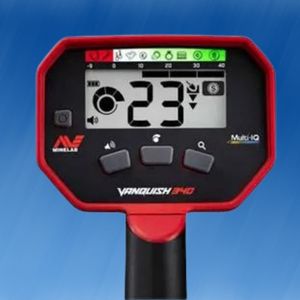
Before this technology was available, it was considered to be the Holy Grail of detecting technology and was hoped for over a considerable time.
Metal detectors only consisted of single frequency technology in the main. This was the norm as it really was the only thing that was available.
I have a dedicated article where I talk further about Multi Frequency technology and multi frequency metal detectors here.
There were some very top end machines that offered two frequencies by a clever way of using a harmonic of a single frequency to produce another frequency (The Whites DFX).
This machine was considered revolutionary as it could detect using a frequency of 15 KHz and 3 KHz.
The frequency a metal detector uses and its effect on certain types of metal has been well documented. In fact, you can further read how frequencies effect different metals in my article metal detector discrimination and conductivity here.
It’s common knowledge within the detecting community that inherently, lower frequencies have certain benefits in terms of detecting depth and larger targets of certain metals and similarly, higher frequencies have certain benefits in terms of speed and detection of smaller targets.
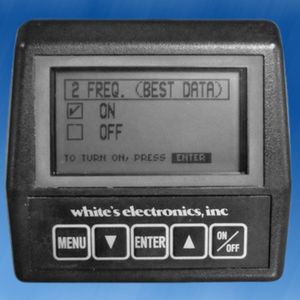
In the days when single frequency machines were all you could get, a stark choice had to be made.
Do you go for a higher frequency machine or do you go for a lower frequency machine?
A lower frequency machine would have the benefit of being able to detect at greater depths, recognise deep iron better and recover deeper, thicker sectioned silver coins.
These machines were known for finding deep silver.
Higher frequency machines would be known for finding smaller, thinner targets like medieval hammered coins at shallower depths and were typically called “Hammered Hoovers”.
You can read my article on medieval hammered British coins here.
Both frequencies have benefits and also shortcomings. Lower frequencies take longer to process, could consequently suffer from “target masking” and would also be less sensitive to smaller, thinner targets.
Higher frequencies would be faster to process so would be great at finding small targets in amongst iron but would suffer from reduced depth and miss deeper targets.
This would be a big consideration if you were focussed on finding gold. I have an article on choosing the best detector for gold here.
The Holy Grail I’m talking about is having the benefits of lower frequencies and higher frequencies working together to give you the awesome power of knowing that you’ll miss very little.
Manufacturers knew this in the early days and the only way you could do this really was to design a detector where you could change the search coil and thus change the frequency.
Typically, the Minelab XTerra range could do this. This was a great concept but a bit of a faff as you always thought that whatever coil you used, you’d always be missing targets.
The next way manufacturers offered this was to allow the user to manually change the change the frequency they wished to use.
This was much easier but it essentially still only used one frequency whilst detecting.

This is where the game changer came into play and Minelab launched its Multi IQ technology.
When this was perfected, it was packaged into the Minelab Equinox 600 and 800 detectors.
The 600 can be described as the entry level Equinox and uses 3 frequencies. The 800 uses all 5 frequencies promoted with the Multi IQ system.
A small note here, just because the Equinox 600 uses 3 frequencies and doesn’t have a “Gold” mode, it still packs a punch and has immense adjustability.
The two higher frequencies it lacks were really intended for gold prospecting which isn’t really necessary for UK hunting in terms of finding pin sized nuggets of gold!
The game changer came when Minelab decided to launch the Vanquish series with all models in the range featuring the full 5 frequency Multi IQ system.
This now means that even on the entry level “switch on and go” Vanquish 340, you have the full power of this Holy Grail technology for less than £250!
This technology has basically in my mind rendered single frequency machines obsolete. After Minelab’s patent expired on Multi Frequency technology. Others were free to copy it.
Garrett launched their Ace Apex to compete. I have an article that compares them. Garrett Ace Apex vs Minelab Vanquish 540 can be found here.

Unbeatable Multi Frequency!
You can now get the ultimate power of multi frequency technology over single frequency detectors with the Minelab Vanquish range of detectors.
The entry level Vanquish 340 now gives you ultimate depth, stability and sensitivity on all target types in every soil, including wet beach sand.
Don’t get me wrong, single frequency machines can be absolutely brilliant but why wouldn’t you want a multi frequency machine for the same money or less than a single frequency machine?
Even now, manufacturers are still selling single frequency machines at higher prices than the Vanquish series.
Minelab Vanquish Model Features
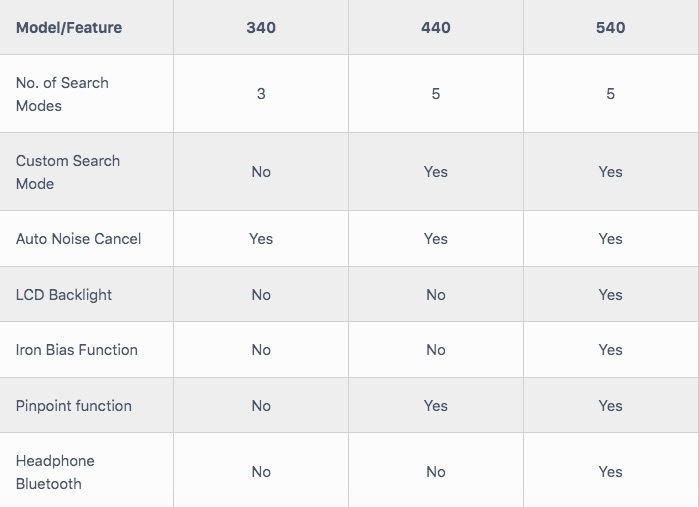
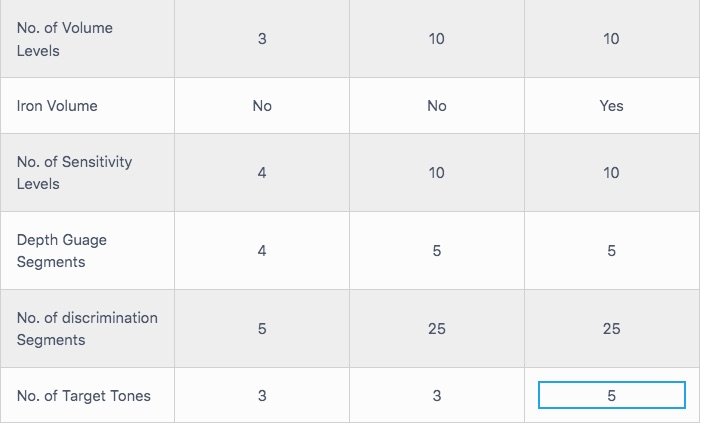
Many of these features and settings are explained how they work in my article about metal detector settings here. As you can see at a glance, the further up the range you look, the more features and adjustability you get.
The one thing they all have in common however is that they all share the same powerful Multi IQ system and all use 5 simultaneous frequencies.
Looking at the differences briefly, the 340 has three search modes, Coin, Jewellery and All Metal. The 440 and 540 have five search modes.
The additional modes on the 440 and 540 are Relic and a Custom mode in which the pattern can be adjusted by user.
The modes simply have varying degrees of discrimination to reject junk, either sympathetically or aggressively depending on your location and the trash density.

Only the 540 model has a backlight for the LCD screen for use in low light conditions and also an Iron Bias function.
The Iron Bias function helps reduce false signals given off by larger iron in the ground.
Sometimes large iron can give off non-ferrous signals as well as ferrous signals. Iron Bias helps reduce this making it sound more like iron.
There is no pinpoint function on 340 so target location has to be carried manually by carefully crossing the target at a 90 degree angle.
(This is the way I do it anyway on my Equinox 800!) Also, only the 540 model has the Bluetooth functionality to connect wireless headphones. The 340 and 440 only use wired headphones.
The 340 only has three adjustable volume levels where as the 440 and 540 models have ten adjustable levels. A handy function to have is the Iron Volume which is only available on the 540.
This means that you can hunt with no discrimination but turn down the volume given off by iron so it’s just in the background. This then makes good targets pop out at a higher volume.
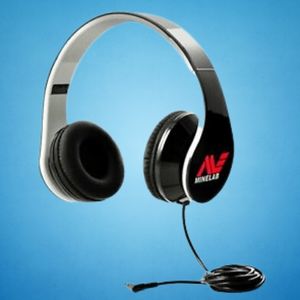
Sensitivity is more adjustable on the 440 and 540 models having ten levels of adjustment. The 340 only has four levels of adjustment.
You also get one more depth gauge segment indicator on the 440 and 540 which will indicate if a target is greater than 8 inches deep.
The 340 will only tell you it’s greater than 6 inches deep. (In reality, I very rarely even look at my depth gauge!)
There is a marked increase in the number of discrimination block segments on the 440 and 540 compared to 340.
This really is only apparent because the 440 and 540 have the ability to create a custom pattern. With this function not available on 340, it’s not really that relevant.
Finally, the 340 and 440 have three target tones which consist of a low, mid and high tones depending on the targets conductivity. The 540 has two more intermediate tones which separates the tones breaks a little further.
Minelab Vanquish search coils

The Minelab Vanquish ships with an awesome coil which they call the “V12”. This is actually an inch bigger than the stock coil that ships with the Equinox 600 and 800.
The coil is elliptical and not circular like the Equinox coil which means it can be marginally easier to negotiate through stubble.
If the stubble is a bit more fierce, smaller coils are available.
The coils are of a DD type which make them perform excellently amongst iron and are give fantastic target separation.
With the stock coil being 12 inches from tip to tip, this gives you great depth as well as increased ground coverage.
You can read more about coil types and how they work in my article on metal detector coil types here.
Who is the Minelab Vanquish aimed at?
To compare the Vanquish with its big brother the Equinox wouldn’t be a fair fight really. The Equinox has a lot more adjustability and is aimed at the seasoned intermediate and advanced detectorist.
The Vanquish I think is aimed at potential new detectorists and beginners who are moving into the intermediate level looking to upgrade from a single frequency detector.
Once again, if you fall into this bracket, you have the opportunity to own a very powerful technology that once was only dreamed of by detectorists. Minelab have offered this at really affordable prices.
This makes it perfect to earn an extra income from home by beach metal detecting. Read my article here about earning extra money from beach detecting.
Minelab Vanquish User Manuals
You can easily find some more information from the links here. The user manual for the Vanquish 340 can be found here.
If you need the user manual for the 440 and 540, it can be found here.
Final thoughts
Best value metal detector UK
If you are someone new coming into the wonderful world of metal detecting, you’ve arrived at a great time where detecting technology has made a breakthrough with multi frequency detection.
You now have the ability to purchase this technology at really affordable prices. Why not also read my article comparing the Nokta Makro Legend and the Equinox 800.
If you are looking for a new detector or upgrading from a single frequency detector that is a breeze to use yet very powerful, the Vanquish series is absolutely for you!
It has superb depth and sensitivity along with constantly giving you stable target identification due to the increased information from its five frequencies. The Vanquish series is a game changer!
If you are new to metal detecting, why not find a metal detecting near you here, or maybe find farmers who allow metal detecting here.

Unbeatable Multi Frequency!
You can now get the ultimate power of multi frequency technology over single frequency detectors with the Minelab Vanquish range of detectors.
The entry level Vanquish 340 now gives you ultimate depth, stability and sensitivity on all target types in every soil, including wet beach sand.



